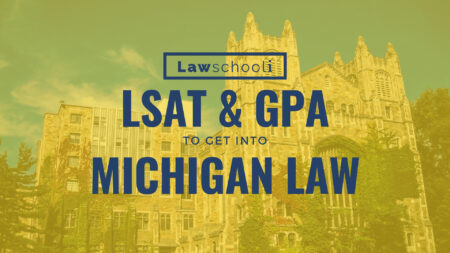Law schools are competing aggressively over the greatly reduced applicant pool that we’ve seen in recent years. Most lower ranked schools have had to compromise and reduce class size as well as let in students with weaker numbers (LSAT and GPA). While T14s have had to lower selectivity and drop class size a tiny bit, generally, they are holding the same standards. T14’s and the other big top 25 schools are winning the battle to get students in a big way. While the prestige of the institutions is certainly helping them attract the top applicants, perhaps the biggest factor is that these schools have very deep pockets and can hand out tempting scholarship offers.
Schools with healthy endowments such as the t14 schools and many of the schools ranked just below the t14 have been able to throw more and more money into financial aid in recent years.
Before the recession, top students often had larger money offers from lower schools. What would happen then is that a lower ranked school would offer a lot of highly qualified applicants a big scholarship, knowing that usually very few of them were going to take it (as most students at that time went to the highest ranked school they could get into). Higher schools would offer much lower scholarships to the same applicants, knowing they could get them with that offer. The general rule in law school scholarships (with exceptions in the case of need-based aid) is that schools offer the smallest amount of money that they think will draw you to a school.
Now the higher ranked law schools are finding that they too need larger scholarships to draw in highly ranked students, and all the evidence suggests that they are stepping up to the plate. Meanwhile lower schools haven’t been equally able to bring more money to the table.
A recent Washington Post article covered this effect among the DC area law schools, where we can see how the higher ranked schools are clearly out-performing the rest when it comes to drawing students. Georgetown enrollment is down a bare 8% from 2010, and their admissions standards have remained close to where they were. George Washington, traditionally a ~T25 school, has done worse but not bad: a big financial aid push allowed them to recover this year to almost 2010 enrollment numbers. Slide on down to #41 George Mason and the picture is bleak to say to the least: the class is at half its size and admissions standards have slipped as well.
The Dean of George Mason lays his problems on not having enough money to compete:
“Some of the programs against which we compete are very old and rich programs,” he said. “We do have some scholarships and financial aid, but not a lot … Schools that are very rich are able to fill their classes with the very best kids, and price is no object for them.” (source)
This same pattern is happening all over the country. The lesson to would be law students is that you should be very skeptical about attending a school that is under-performing in terms of financial aid. Don’t go unless you are sure you got a very good offer there. And yes, that may mean that you shouldn’t go to law school. If you can’t get in somewhere at a great price, there are likely better options for your future out there besides law school. We cover the situations where we feel law school is a ‘safer’ bet here.
Also be aware that you need to negotiate like crazy with law schools- the first offer they give you may be nowhere close to what they are willing to pay to reel you in. We discuss this here.
Overall, law school is slowly moving towards a model similar to that we have in place for undergrad, where very few people pay the ticket price to attend. However, the richer schools near the top and especially the t14 are way further along with this and are likelier to provide you a legal education at a good value. Don’t be a member of the last generation to pay too much for a law degree: be careful weighing your choices so that what you get out is worth what you pay in.




4 Comments
Hi Joshua and Evan,
I think your article misses a huge point. I did very well on my LSAT and was accepted to most of the T14 schools barring Harvard/Yale/Stanford, but received very little merit aid if any at all because those schools expect people to pay top dollar.
I’m in the position where I’m paying for law school myself and I would also be paying for housing yet I would not expect to get anything but loans out of financial aid. I needed to rely on merit aid.
I took a full scholarship that is guaranteed for all three years and no GPA req at a T2 school where I wanted to work/live and I love it.
Granted, perhaps if I was dying to do BigLaw I would have chosen another option, but that’s not my personal case.
The point is I don’t understand how T14 schools could be better for your money. That wasn’t true for me, but now I am going to law school for free.
Liz,
Evan here. Yes, when you compare a T14 against a T2, the T2 is generally going to offer a T14 quality applicant more money. That doesn’t necessarily make it a better value, as value is payout less cost (though I think doing what you did is often the best decision and the best value for an individual).
The point is that T14s and some other high-ranked schools are currently offering a greater percentage of their students money and those offers are greater than they were before the applications drop. What’s more, these schools are increasing aid, whereas many schools below are stuck where they were. Given the better job prospects these schools provide, I think these schools offer their student body the best value when you consider the students as a them as a group.
It’s also wrong to say T14’s expect people to pay top dollar. They do exactly what every other school does, which, as I said in the article, is give you the smallest scholarship that they think will draw you to your school.
Yes, you and couple other students might be on a full ride at your school. Another half or so have some kind of smaller scholarship because their numbers are a little above average. Then rest of your classmates are also expected to pay top dollar, (just like those with averagish or lower numbers for the T14 applying there) because your school has more such applicants than it needs to take. This all looks very similar at your school or at, say, Columbia (except Columbia and it’s peers are likely outperforming most of the lower schools in terms of total aid paid out).
It’s comparing the average of every student’s situation at your school to that of every student at a T14 that gives us a judgment as to value. While doing what you did is going to be the best decision in a lot of cases, I don’t think every t14 student should do that (even if that were possible, which it’s not), nor do I think that would be providing them all superior value.
Hi there! I will be taking the December LSAT and right now I’m working on my apps to so I can have everything in as soon as the scores are released. While I’m desperately trying to convince myself that December scores wont’ be a huge handicap while applying to T14 schools, I’m also concerned that perhaps scholarships will dry up if I apply so late?
Thank you!
Rachel,
Here’s some help with that: it’s not going to be a big issue to apply in December provided you have competitive numbers. There are so few highly qualified applicants right now that the top schools will be competing for them with scholarship money even late into the cycle. There will be plenty of spots and plenty of money left for December takers.
Do definitely have your apps ready to go out the door by the time your score arrives.
Let us know if you have any questions about your apps or your LSAT prep.